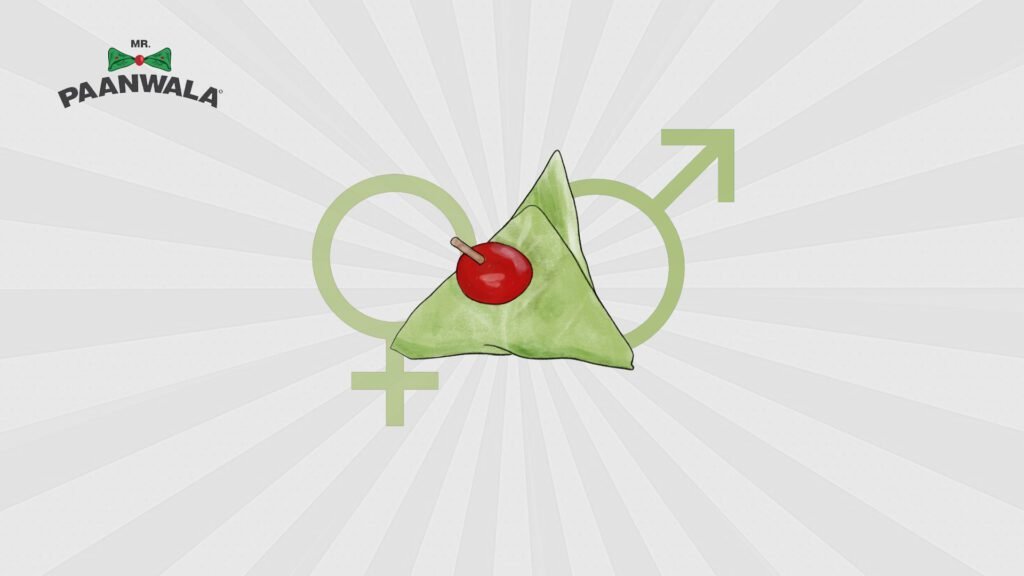Paan, a symbol of hospitality and tradition, has long been associated with masculinity. From the iconic image of a paan-chewing politician to the classic Bollywood hero with a red-stained smile, the paan culture has often been seen as a male-dominated space. However, women have played a significant yet often overlooked role in both paan preparation and consumption. Whether as skilled artisans, connoisseurs, or participants in cultural rituals, their relationship with paan is deeply rooted in history and evolving in modern times.
Women in Paan-Making: The Unseen Experts
While paan shops have traditionally been run by men, women have long been involved in its preparation, especially in households and behind the scenes. In many Indian families, grandmothers and mothers have passed down the art of paan-making, curating the perfect blend of ingredients for post-meal indulgence.
- In regions like Banaras and Lucknow, women from certain communities have historically prepared paan for aristocrats and royalty, ensuring precise flavor combinations.
- Some female entrepreneurs have recently broken into the paan business, opening exclusive paan boutiques that cater to modern, health-conscious consumers.
- In rural settings, women often prepare paan for social gatherings, playing a key role in preserving the cultural aspect of its consumption.
- These traditions are often intertwined with elements like Indian Wedding Decor, where paan stations are becoming central features of event design, especially for their aesthetic and symbolic value.
Gendered Associations with Paan Consumption
For centuries, chewing paan was seen as an act of leisure and dominance, often linked to men in positions of power. However, women across different communities have always consumed paan in more private or social settings.
- In parts of Bengal and Odisha, women chew paan as part of daily rituals, often pairing it with betel nuts and lime for digestive benefits.
- Among royalty and zamindar households, women of the family were known to have their personalized paan, often infused with delicate flavors like rose, cardamom, and saffron.
- In some conservative societies, women consuming paan publicly was once frowned upon, but today, it is common to see women of all backgrounds enjoying paan without hesitation.
- A paan corner is often present in Indian Wedding Decor, celebrating a change in perception and highlighting women’s paan preferences during major events.
Paan in Wedding Rituals and Social Gatherings
Paan plays a central role in traditional Indian ceremonies, with weddings being one of the most significant occasions where its presence is indispensable.
- In North Indian and Bengali weddings, a paan-filled platter is exchanged between the bride and groom’s families as a gesture of goodwill and auspicious beginnings.
- During post-wedding rituals, the bride is often offered a sweet paan as a symbol of her transition into married life.
- Women in South Indian households prepare paan as part of festive offerings, ensuring each betel leaf is folded with precision and care. With the growing popularity of themed weddings and a focus on cultural authenticity, Indian wedding décor often includes beautifully styled paan displays—honoring tradition with an elegant and meaningful touch.
Redefining the Paan Culture
As times change, the gender dynamics of paan culture are evolving. More women are stepping into the industry, opening specialty paan shops and even modernizing recipes to align with contemporary tastes.
Mr. Paanwala, known for its innovative approach to paan-making, continues to break stereotypes by offering an inclusive experience. Through its premium, tobacco-free paans and dedication to quality, the brand ensures that paan remains a delight for everyone, regardless of gender. The craft of paan-making, once confined to traditional norms, is now being redefined as an art accessible to all—especially when elegantly showcased in Indian wedding décor in NY, where rich heritage blends seamlessly with modern innovation.
